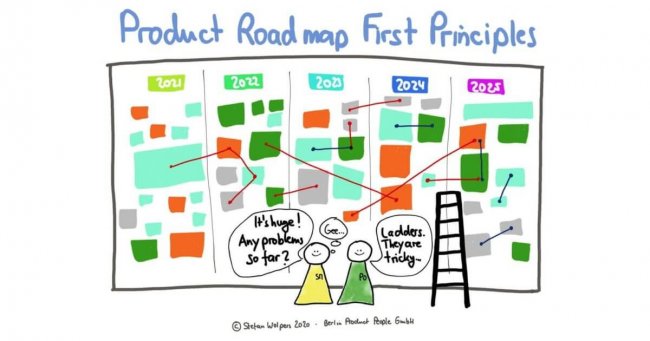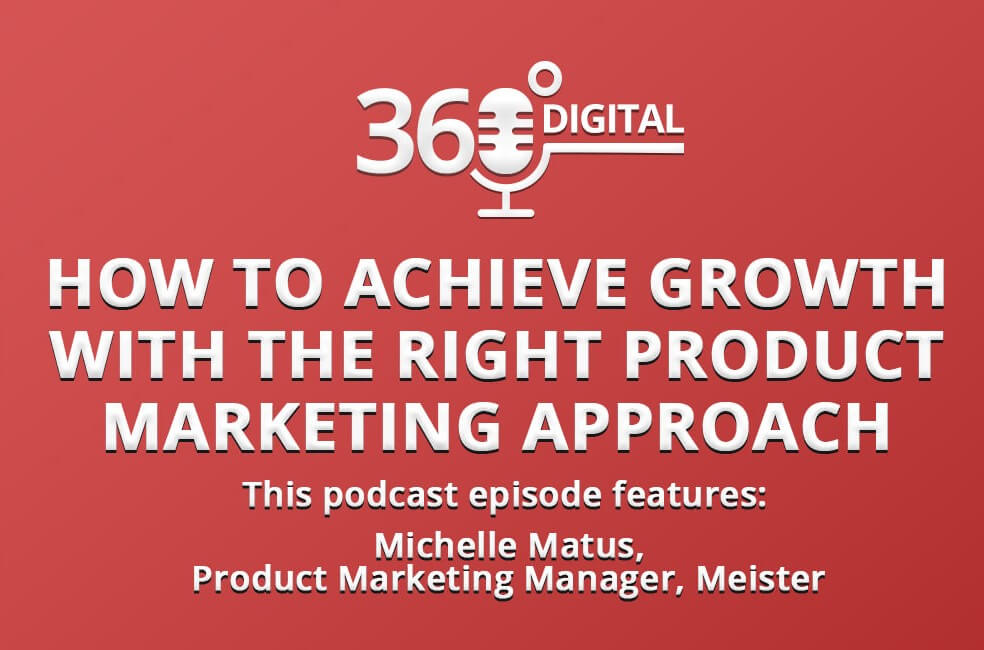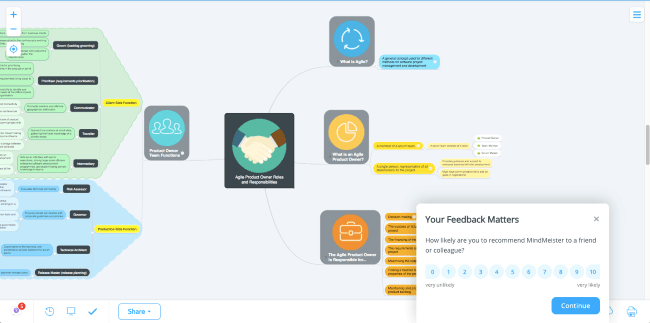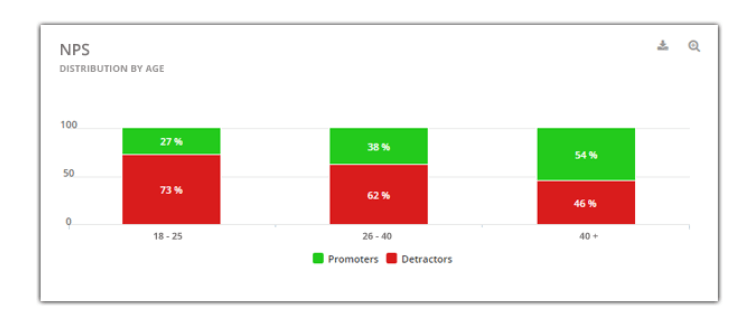Markets move fast, leaving little room for delay; a trend which has left many product managers and marketers with a great deal of pressure to perform and achieve product excellence.
Nearly 77% of consumers view brands more favourably when they actively seek and act on customer feedback
Therefore, for product teams, success is all about getting the right products to market faster, guided by user insights, a clear strategy, and a data-driven roadmap. Previously, many teams relied on assumptions, but today decisions are increasingly data-driven thanks to product feedback.
In this guide to collecting product feedback, we will address the following:
- What is product feedback?
- Why is product feedback important?
- Benefits of product feedback
- Examples of product feedback surveys
- Product feedback questions and metrics
- Tips for collecting product feedback
Go live with something that delivers a small amount of value quickly. Work faster and smarter by launching chunks of functionality that give you the chance to make choices based on real feedback, and you’ll end up with a final product that really works for its visitors.
David Newell, Product Manager at Canterbury City Council

Want to learn how to develop a product your users will love?
Watch our webisode and get tips and tricks on how to create the ultimate user experience in your product.
What is product feedback?
Product feedback is input shared by users about their experience and satisfaction with your product. This type of feedback is gathered in various ways including digital feedback surveys, user interviews, customer support tickets, reviews ratings, social media, etc. Though for the sake of this article, we will focus on the first method: digital feedback surveys.

Source: Productboard
This particular type of feedback is collected in various ways and oftentimes it is centered around a certain product goal such as a product launch, the product development pipeline, user onboarding, or even user testing (i.e. the introduction of new services, features and upgrades).

Find out how NCSA builds better products with user feedback
In this story, NCSA explains why nothing can replace capturing feedback from a user actively engaged with your product.
Why is product feedback important?
Product feedback keeps your strategy user-focused. It prevents teams from building features blindly and helps prioritise what really matters to customers.
Customer feedback is essential for our company, not only to ensure successful results for our clients, but also to have real-time data on product feature adoption and trends to ensure products remain user-friendly while staying at the peak of digital innovation within our industry. Nothing can replace capturing feedback from a user actively engaged with your product.
Angie Truby, Consumer Insights Manager at NCSA
Don’t believe us? Let’s take a look at a number of benefits product feedback serves up for product teams.
Benefits of Product Feedback
+ Product feedback aids in prioritising the product roadmap
From setting up a strategy and feature definition to marketing forecasting, product teams have a lot on their plates in terms of the product roadmap. After all, your goal is to create a product that not only solves real customer problems, but also exceeds expectations. This means you need a foolproof product roadmap that is backed by informed product decisions.
And product feedback supplies just that, giving you insights into your product performance and where you should prioritise.

Source: Age of Product
For example, there are many organisations that work on a continuous deployment model, in which case prioritising new features and releases is of utmost importance as these features go out quickly. There is no time to be wasted.
You must have a strong identity for your product. You need to know what it’s meant for and what it solves. Your customers might stray and find other ways to use your product but don’t let that take you off course from your original intended use.
Chris Chumley, COO at Campus Logic
And keep in mind that it’s not the volume of feedback you implement that matters, it’s what eventually ends up in the product that moves it forward.
Want to learn more about how you can align your products with your vision using product feedback? Be sure to check out this post: How to Balance Product Vision with User Feedback.
+ Product feedback helps build a product that is successful
If we look at which products are most successful out there, it’s usually the ones that are continuously being monitored for performance.
Imagine launching a new digital tool and making no new enhancements for a year. Odds are your tool will become obsolete, as your competitors have probably made tweaks and UX improvements to their tools in order to meet the needs of users. With product feedback, however, you can keep a close eye on developments and changes in user habits and expectations.
Take the organisation MeisterTask, for example. MeisterTask is an intuitive (and rather new) task management tool on the market that helps teams stay aligned with one another.
In an interview with MeisterTask, it came to light that the team was leveraging product feedback to understand what their users like and don’t like about the tool (in-app), and then use that feedback to make improvements to a feature or the product as a whole.

Example of a survey assessing the Agenda feature within MeisterTask.
As a result, the team has learned a great deal about how to improve specific features (such as the Agenda feature above) and provide a more meaningful user experience for their users.
Want to read the full story? Check it out here: How MeisterTask transformed its user experience with Mopinion feedback.
+ Product feedback facilitates faster product iterations
With the insights gained from analysing your product feedback, you can then communicate actions to your product team and carry out quick changes to improve the experience for the customer.
Note: this goes hand-in-hand with the prioritisation of your product releases as fast iterations can only be carried out with quick and priority-focused decision making.
These insights will not only make space for better product development and smart marketing initiatives, but can also help improve your product offerings – all of which will help you get ahead of your customers, generate new customers, and build up loyalty with existing customers.
Be sure to check out this post wherein industry experts share how they iterate faster and maintain a balance between user feedback and the founder’s vision.

Taking the right product marketing approach...
Tune into this brand new podcast episode on 360 Digital and discover what really goes into developing a product strategy
Examples of Product Feedback Surveys
There are many different opportunities (and timeframes) to gather product feedback. Let’s take a look at a few different examples.
1. Surveys on existing products and features
Many organisations start out collecting product feedback to measure the performance of existing products and features. Logical, in fact, because this same feedback can tell you a lot about where you should direct your roadmap in terms of new features.
However, if you’re looking to gather feedback data on your existing products, your survey depends very much on what you want to learn from your users. For example, many organisations leverage the survey below for general feedback regarding their product. These types of surveys bring in very useful information regarding aspects of your product that you or your development team have never once considered.

Source: Mopinion
There are also other options in terms of in-app product feedback surveys such as gathering Net Promoter Score (NPS) or Customer Satisfaction (CSAT).
We do this in-app by using the NPS element offered by Mopinion and then we ask an open question where we let users give us more details about what they like and dislike.
MeisterTask

Example of an NPS survey within MeisterTask.
2. New products and services
Depending on certain factors such as the size of your company and the time frame you’re working with, a new software or product release can be released in one of the two different ways. You can develop and release an entire product all at once and start testing it altogether, or break the process down into phases, testing different modules as you go. The latter, which is typically the route most SaaS companies go, is the approach we, here at Mopinion, followed as well.
In fact, Mopinion gathered its very own product feedback during the beta launch of its new user interface Mopinion Raspberry.

Source: Mopinion
When creating feedback surveys to measure the user’s response to a new product or service, it’s important to identify which form elements you will need. This is especially true if you expect a high volume of responses (i.e. if you have a large development team or big batch of external beta users) as you’ll need to find ways of – for example – categorising the incoming data so that it is easily digestible and filterable.
The form above is a simple, standard survey you can use just about anywhere and gathers more general feedback regarding your product.
You can also take this one step further and gather user feedback leveraging cool feats such as visual feedback and feedback categories (for easy analysis).
For more information regarding gathering this type of feedback, be sure to check out our post on how to collect feedback during software testing.
Product feedback questions and metrics
To supplement your typical product management metrics such as monthly active users (MAU), daily active users (DAU), customer retention rate (CRR) and customer acquisition cost (CAC), user feedback serves up the opportunity to measure a few additional metrics.
As we previously mentioned in this post, there are two very popular metrics used when collecting product feedback including Net Promoter Score (NPS) and Customer Satisfaction (CSAT).
Net Promoter Score (NPS)
Net Promoter Score (NPS), perhaps one of the most popular loyalty metrics, is a great way of gauging customer loyalty online. It’s important to mention that NPS should never be used as a generic metric as it is only really effective when geared towards current and/or long time customers who are familiar with your brand. In other words it’s better to collect NPS scores from actual customers rather than anonymous visitors who have yet to build up any sort of relationship with your brand.
NPS can be measured in one of two ways: either to gather general insights on how the business is perceived by a customer (based on overall experience and the brand itself) or to gather insights based on a transaction the customer has made with your business. These two types of NPS surveys are referred to as Relationship and Transactional surveys.
Customer Satisfaction (CSAT)
Customer Satisfaction is essentially a measurement of how well your product or feature in this case meets the expectations of your customer. This could be measured based on a particular section of your app or alternatively, at an aggregated level (e.g. how satisfied are they with the entire product). Often companies measure CSAT using a number scale ranging from 1 to 10.
To accompany these metrics, many organisations choose to incorporate additional questions in their product surveys to get to the bottom of the product experience. Some great examples of follow up multiple choice questions include:
Which of the following best describes the reason for using our product?
- A) To save time
- B) To save money
- C) To increase productivity
- D) Other
Which of the following features do you use most frequently in our product?
- A) Search
- B) Navigation
- C) Filters
- D) Other
Alternatively, you can ask questions that require an open answer:
- Did you encounter any problems while using our product? If so, please describe them below.
- Is there anything that you found particularly frustrating or confusing while using our product?
- Have you experienced any errors or technical issues while using our product? If so, please describe them below.
Looking for some more inspiration regarding product feedback questions? Check out this post.
Tips for successfully collecting product feedback
Before we bring this post to a close, we’d like to leave you with a few tips for collecting product feedback.
1. Collect product feedback frequently
One of the best things you can do when it comes to collecting product feedback is to do so frequently. Digital products evolve fast and customer expectations even faster, so it’s important to stay ahead of the curve and iterate on your products consistently using user insights. Additionally, gathering product feedback before, during and after a launch will give you a sense of how far you’ve come as well as what’s needed in order to progress forward.
2. Align your product feedback to customer data
Aligning product feedback with customer data (i.e. demographics, behaviour, etc) can be a useful way of refining your insights.
Can your product feedback software do this?
To properly combine feedback data and customer data, your feedback software must be capable of running on the page and simultaneously capturing customer data and feedback data. The software must then be able to store the customer data together with the feedback results. This means that alongside the feedback (e.g. scores or open comments) you will also see data on that particular user (e.g. AB test sessions, customer data, segmentation data).

Example of chart with NPS distributed by age.
3. Leverage an effective product feedback loop
Our final (and perhaps most important) tip for you is to leverage a product feedback loop that works for you and your organisation. The product feedback loop includes gathering user insights, spreading this feedback effectively across your organisation, implementing changes, looping your users in with said changes and then repeating that process indefinitely.

Source: How to Build a Startup (by Sam Altman)
Note: the part many organisations tend to struggle with are the last two steps: collaborating internally and closing the loop with users/customers.
In order to collaborate effectively with your team, you’ll need to determine the following:
- Which tools will you use to spread this knowledge? Do you work with a project management tool? Or does your user feedback software offer built-in action management solutions?
- Who will be involved in your product decisions? What will their responsibilities be? And what data do they need to make these decisions?
Then of course, you’ll need to clue your users into the latest changes you’ve made. Not only does this make them feel heard, it also introduces them to changes or new products that they may potentially benefit from and are not yet aware of.
For this process to be a success, you’ll need to determine the following:
- How will you share updates / new releases with customers?
- How frequently will you do this?
- Will this action be broken down into relevant personas or your user group as a whole?
There’s lots to think about in this stage, however, if you follow these steps, you’ll be well on your way to closing the product feedback loop and thus deeming the entire feedback process worthwhile.
Choose a product feedback software and get started
Collecting product feedback consistently helps teams prioritise, iterate faster, and build products users truly value. No matter which tool you use, the key is to act on insights and close the loop with your customers.
To get started, explore some of the best product feedback tools on the market, ranging from survey solutions and in-app feedback widgets to all-in-one platforms like Mopinion that combine collection and analysis in one place
Want to learn more about Mopinion’s all-in-1 user feedback platform? Don’t be shy and take our software for a spin! Do you prefer it a bit more personal? Just book a demo. One of our feedback pro’s will guide you through the software and answer any questions you may have.Ready to see Mopinion in action?







